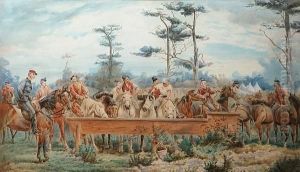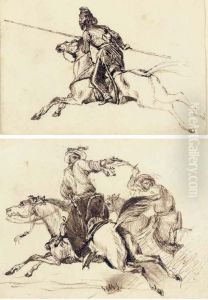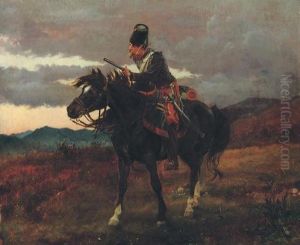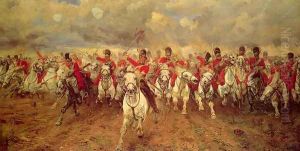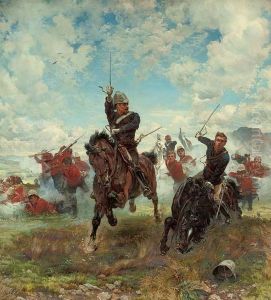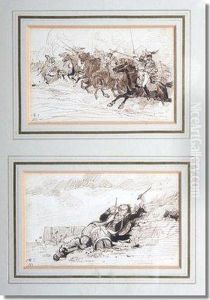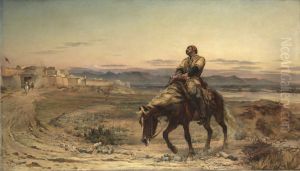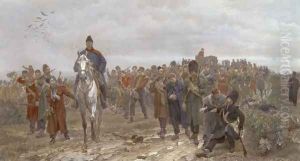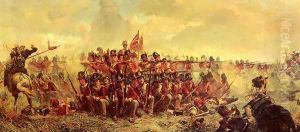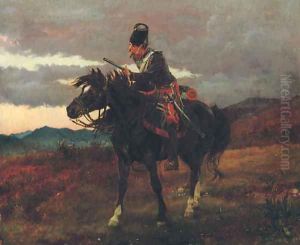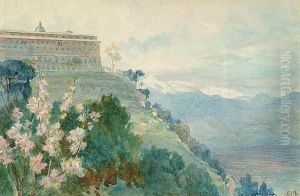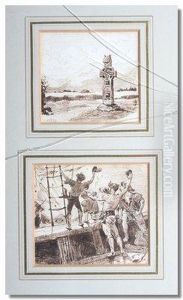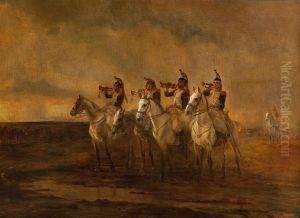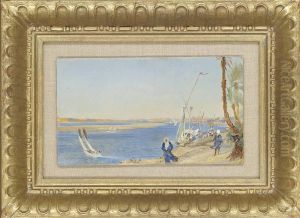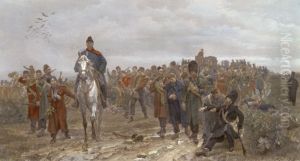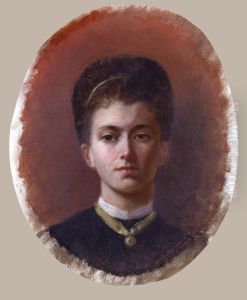Elizabeth Thompson Paintings
Elizabeth Thompson, Lady Butler, was a prominent British painter among the few female artists to achieve fame for her military scenes. Born on November 3, 1846, in Lausanne, Switzerland, she was the daughter of Thomas James Thompson and Christiana Weller. Her upbringing was cosmopolitan, reflecting her family's travels across Europe, which exposed her to various cultures and art forms from a young age.
Elizabeth showcased an early talent for art, leading her to pursue formal training. Despite the era's gender norms that restricted women's access to art education, particularly in studying the male nude, she was determined to specialize in history painting. She studied under the artist Giuseppe Bellucci in Florence and later attended the Female School of Art in South Kensington, London.
Thompson first gained public acclaim in 1874 with her painting 'Roll Call', depicting a scene from the Crimean War. This work, exhibited at the Royal Academy, broke the gender barriers of the time, earning her widespread recognition. Her ability to capture the vividness of battle scenes, along with the detailed portrayal of soldiers, distinguished her work in a genre predominantly occupied by male artists.
Despite her success, Thompson faced challenges in the male-dominated art world. Her works were often scrutinized more harshly than those of her male counterparts, and she was never elected as a member of the Royal Academy, a recognition she deeply desired. Nevertheless, she continued to produce impactful works, including 'Quatre Bras' (1875) and 'Balaclava' (1876), which further solidified her reputation.
In 1877, Elizabeth Thompson married Major General Sir William Butler, changing her professional name to Lady Butler. Although her marriage and subsequent responsibilities as a mother influenced her output, she continued to paint, focusing on themes of heroism and the British Empire. Throughout her career, she remained a popular and respected figure, with her paintings being commissioned by the military and collected by enthusiasts.
Lady Butler's legacy extends beyond her military paintings; she was a trailblazer for women in the arts, demonstrating that female artists could compete and succeed in genres traditionally reserved for men. She passed away on October 2, 1933, in Gormanston, County Meath, Ireland, leaving behind a body of work that continues to be celebrated for its historical significance and artistic merit.
